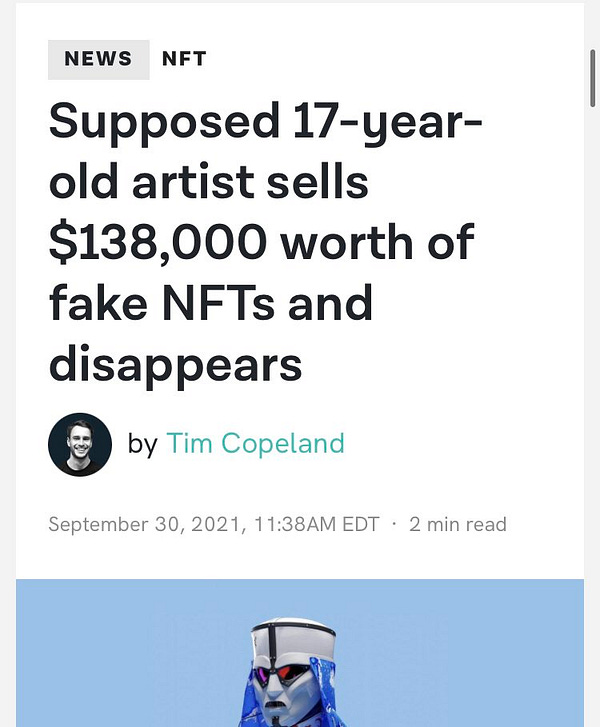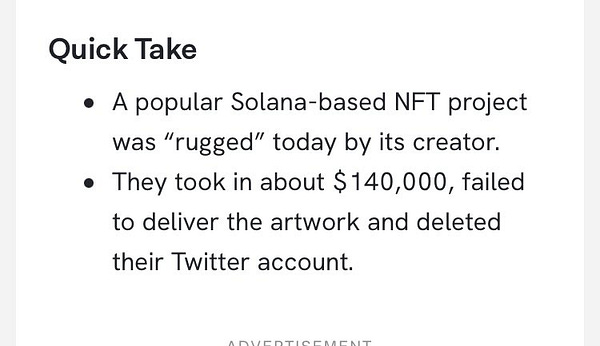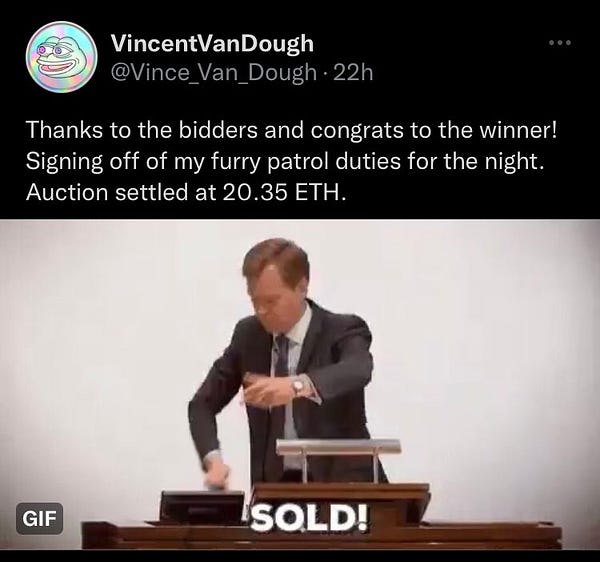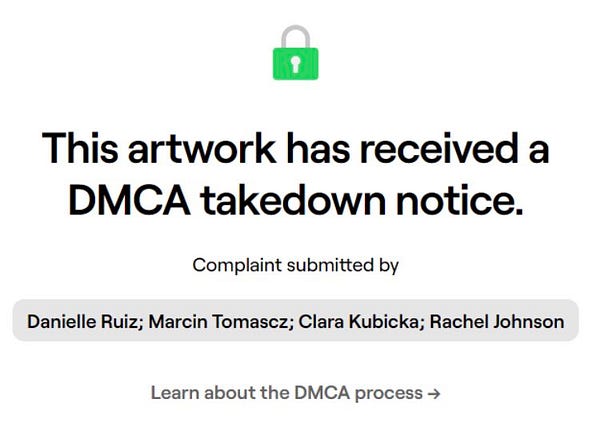Let’s talk about NFTs - non-fungible tokens.
A what?
Let’s break this down…
Non-fungible means that something is unique; you can’t trade it for something else. You could trade a penny for another penny, showing that it’s fungible. However, you can’t really trade something one-of-a-kind (think baseball cards), because you’d get something else entirely.
NFTs are built on what’s called a blockchain - usually the Ethereum cryptocurrency’s blockchain, to be specific.
A blockchain is basically an encrypted, impossible to change list of transactions/data that anyone can view or share - but they can’t copy.
These blockchains encrypt a block of verified transactions into a ‘hash’ - something like a random password generator. The hash works in a certain way so that if you try to hack to change one transaction, you would have to tamper with all of the transactions in the block. This makes it basically impossible to hack or edit the blockchain. (Asterisk here, of course.)
Blockchains are considered decentralized, meaning there is no central power like a bank (it’s complicated, and this is just simplified). They have a ton of uses, from digital currencies to food processing transparency to NFTs.
NFTs are something like collector’s items, but digital. You get built-in proof of ownership with the NFT, making these incredibly valuable to collectors.
They’re really expensive at times - CEO of Twitter Jack Dorsey sold his first tweet ever as an NFT for almost $3 million USD.
So why are we talking about NFTs on a newsletter about Twitter if they seem so good?
There’s three big reasons NFTs are so controversial on Twitter - and in general, too.
Environmental Impact
An NFT’s carbon footprint varies, but on average one NFT will be about a month’s worth of an electricity from a typical European. Why? Remember that proof of ownership - it’s created by a math-heavy, computer-powered process called mining.
(There are tons of examples of Twitter users joking about the proof of ownership process by posting images of them right-clicking to save an image of an NFT. See this tweet, for example.)
Computers use energy. Lots of it - largely from fossil fuels, which is a major factor of carbon emissions. In total, mining for NFTs could equal the emissions of a small country. This is one of the reasons for tense debate between sides.
Discord went under fire amid a tweet from Jason Citron, founder and CEO of the company, showcasing possible cryptocurrency integration. Swaths of users collectively cancelled their Discord Nitro subscriptions mentioning environmental concerns, and the company has backtracked most of its plans.
See the comments on one of Discord’s recent tweets:

User @_lynko made light of this tweet with an image showing they had made an event named ‘go away nfts’.
User @avgzing tweeted in response, “Release a statement disassociating yourself from NFTs and crypto permanently.”
Money Laundering Schemes
In a world where people can easily commission an artist to the exact specifications they want, why can NFTs get so expensive?
Sometimes it’s cash-outs. Sometimes it’s what appears to be botting to artificially jack prices. And of course, there’s hyper-enthusiasts with a crap-ton of money to spend.
An example of a cash-out (also called ‘getting rugged’) happened when an alleged 17-year-old made $140K in US dollars from selling NFTs. In the end, he did not deliver his promise with the NFTs and instead gave buyers a bunch of emojis.
(Tweet courtesy of @CoinersTakingLs)
Compounding this, prices of both the cryptocurrencies supporting NFTs and the NFTs themselves vary a lot. Something this unpredictable doesn’t really give people the confidence they would need to invest in crypto, would it?
Art Theft Concerns
Anyone can put up an NFT. Of course, anyone can put up an image on a publishing or purchasing site and pass it off as theirs, too. But in the blockchain world where everything is intended to be decentralized, along with occasional insane NFT prices, these are even higher stakes.
Or maybe it’s just… bad art.
A more insignificant (but definitely ironic) example of art theft can be seen here. A couple of crypto users decided to make their own pushback against the right-click-and-save memes by saving avatars of furry users and creating an NFT from them. The bid for the NFT ended at about 20 ETH (it’s not known when this bid occurred, but this amount should be between 40 and 80 thousand US dollars).
And then it got taken down by a DMCA notice.
There’s also art that just appears to have taken so little effort despite raking in so much money.
What is this? Yes, it took about as much effort as you thought it did.


In conclusion, we live in a society.
NFTs have an appeal. They give an owner proof that they actually own this without revealing anything personal. But some things just seem wrong - the mass production of NFTs to rake in cash, the environmental impact from relying on blockchains, we could go on and on.
Who knows where it’ll go? Maybe some of these issues could be fixed - ETH2 (Ethereum 2) promises to bring sustainability upgrades, making most NFTs less of a toll on the environment. Their site says most features will release in 2022, but its release date has almost become a meme to some crypto bros. And even then, inherent issues like cash-outs wouldn’t necessarily be solved.
Let’s not lose all hope in the world, though.
(If something in this post was incorrect or misleading, let me know and I’ll fix or remove it.)









